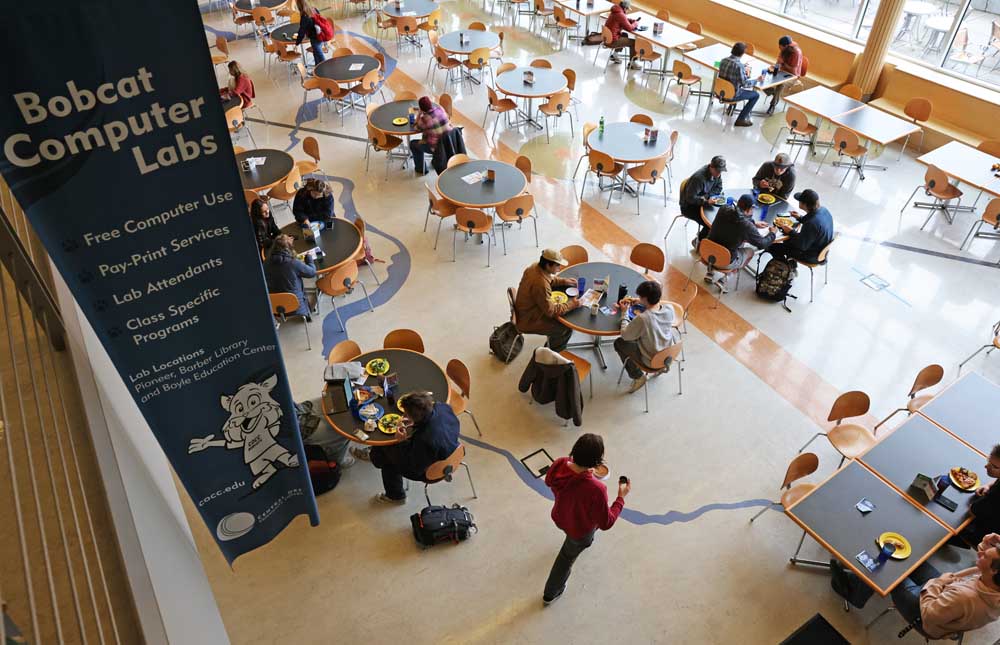Central Oregon Community College enrollment up for the second year in a row
Published 11:00 am Thursday, November 21, 2024

- Students and others gather at the Coats Campus Center at Central Oregon Community College in Bend on Wednesday.
Central Oregon Community College saw increased fall enrollment this year for the second year in a row after years of dropping rates. Enrollment increased 6.2% from last year to 6,004 students taking classes this fall.
Most of the community colleges around Oregon saw increased enrollment this fall due to a bounce back from the pandemic and new programs being rolled out, said college officials.
COCC has seen a drop in enrollment every year for over a decade until 2023, according to college data and the Higher Education Coordinating Commission’s fall 2024 report. In fall 2023, enrollment was up 4.7%.
Oregon community colleges overall saw an increase of 4.3%, while enrollment increased nationally at community colleges by 4.7%, said Tyler Hayes, COCC’s dean of enrollment management.
Over the past two years, community colleges nationwide increased enrollment by 8.8%. COCC is up 14.1% over that same period.
“It’s encouraging to see those numbers and see us up significantly over the last couple of years,” said Hayes.
Interest in certificate programs
Hayes said enrollment has been up across many programs the college offers.
On the national level, enrollment in undergraduate certificate programs has increased 7.3%, while COCC’s enrollment for those programs is up over 20%, said Hayes. These programs take less than two years to complete.
Sumner College launching new nursing school in Bend
“(Interest and enrollment is) up across the board, and we’ve also added some new career specific certificates this last year,” said Hayes. “Our instruction office is really working toward what do we need to meet student needs, and where do we need to add some career-specific certificate programs to help meet those needs.”
The college has added around five certificates this year, including medical coding, automotive maintenance and light repair and apprenticeship readiness, he said. The college is planning on adding more in the future.
“We’re seeing the trend that we’re kind of up across the board in most of our program areas,” he said. “Nursing is obviously one of those where we continue to have a waitlist, very high demand.”
The culinary arts program is another with a lot of interest, he said.
This year, there has been an increase of more than 10% in nontraditional students — those older than 25 — compared to a just over 3% increase in traditional younger students. This is a flip from what the college saw in fall 2023.
This fall, 61% of students are 24 or younger, while 39% are 25 and older .
Older students are looking at certificates to get back into the workforce and to build on their skills for their current employment, said Hayes.
Reaching out to students
Hayes believes there are multiple factors to increased enrollment, one of which is bouncing back after the pandemic.
“I do think as an institution we are doing some things to be strategic around how we’re reaching out to students, again being very intentional with the new programs and degrees and certificates that we’re offering here, to really ensure again that we’re meeting a need in the community,” Hayes said. “That’s really our mission here. As an institution we’ve had to adapt and grow and provide more options for students to receive their education.”
Students also have more course flexibility since the pandemic, including hybrid class options. The college is now offering a course schedule organized for the full academic year.
“Fall term is off to a really good start,” he said. “We’re actually starting to gear toward the end of the term. This week is actually our priority registration week for winter term.”
New students joining for the winter term will be registered and have advising next week.






